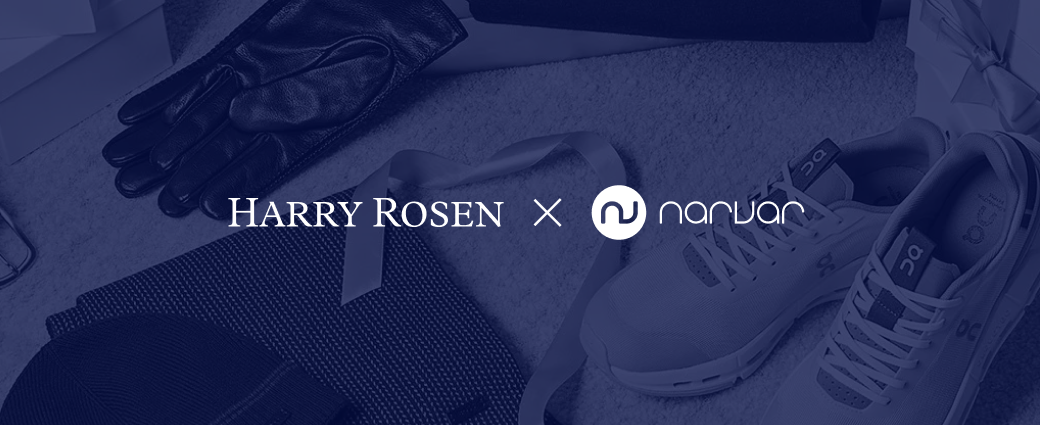
AI-powered delivery date estimates to boost conversion
Give shoppers peace of mind and protect and grow your bottom line
Personalized tracking experiences to build brand loyalty
Returns and exchanges management to mitigate fraud and reward best customers
Proactive communication to drive customer lifetime value
Delivery claim management to tackle fraud and build trust
How to Optimize Returns for Product Bundles
%20(39).webp)
There’s no doubt about it: shoppers love a bargain. Delivering discounts in the form of product bundles is one way to keep customers happy while also supporting the needs of your ecommerce business.
However, the best way to execute on product bundles isn’t always straightforward—especially when it comes to more complex considerations, such as bundle returns. To help increase the positive impact of product bundles on your business, we’ll explore the benefits of bundling, common types of product bundles, and how to optimize the returns process for your newly-created bundles.
The benefits of product bundling
One of the most obvious benefits of bundling products together is the potential to increase overall revenue. Even if you discount the items in your bundle, your average order value (AOV) is likely to be higher than it would be if you relied on customers to purchase each item individually.
Other benefits of bundling include:
- The ability to clear out slow-moving inventory, reduce inventory waste, and limit dead stock by combining underperforming products with better-selling items.
- A potential reduction in the marketing expenses and effort that would be required to sell bundle items individually.
- An easy way to introduce customers to new products.
- Creating a better experience for shoppers by introducing them to products they would benefit from, but aren’t already purchasing.
- Simplifying warehousing, picking, and packaging when bundled items can be stored together.
- Minimizing packaging and postage costs, compared to sending the same items in multiple shipments.
Common types of product bundles
Product bundles come in all shapes and sizes. The following are a few common examples, though this list is far from comprehensive.
Bulk buying bundles
One of the simplest types of product bundling is offering a discount to customers who purchase larger quantities of a single item. Dollar Shave Club, for example, gives customers who buy two-packs of their body wash—instead of single units—a 6% discount off of standard pricing.

‘Buy one, get one’ (BOGO) bundles
Another common form of product bundling is the BOGO bundle. When consumers purchase one item, they receive another item at a discount. ‘Buy one, get one free’ and ‘buy one, get one 50% off’ are two common BOGO structures, though there’s still room for creativity here.
Eloquii’s 2021 Black Friday promotion, for example, allowed customers to take an additional 10% off their orders—above the site’s standard 50% off sale—when they purchased more than one item.

Product bundles with variations of a single item
Product bundles made up of variations on a single item can be a great way for shoppers to try new styles, flavors, or other options they may not have purchased yet.
For example, Nuun’s product bundles let customers try different flavors and types of the company’s hydration supplements with a single, streamlined purchase.

Product bundles of complementary items
Product bundles featuring complementary items help shoppers identify items that can be used in combination together. These bundles can be made up of individual items sold together, such as Ink+Volt’s Entrepreneurial Starter Pack, or they can be packaged together as a single product—as in the case of Urban Decay’s ‘Hall of Fame’ set pictured below:

Capsule wardrobes
A specific type of product bundle featuring complementary items, capsule wardrobes are sold by apparel retailers in an attempt to make getting dressed easy (while also increasing the size of their average order). For example, M.M.LaFleur’s Mix-and-Match Suit Set makes it easy for shoppers to pick coordinating workwear items:

The challenge of product bundle returns
Bundling products together is an obvious win for ecommerce retailers when it comes to increasing revenue. But there’s also a big question that needs to be answered when it comes to bundling: what happens if a consumer wants to return part of the bundle?
To a certain extent, how you handle bundle returns depends on how you’ve structured your bundles in the first place. If you list your bundles as single SKUs, returning one part of the bundle may mean treating the entire bundle as being returned—either requiring the return of all items or writing off those that the customer doesn’t want to return. Creating bundles out of multiple individual SKUs may give you more flexibility when managing returns.
Regardless of your bundles’ structures, there are specific steps you can take to optimize your returns process for product bundles.
How to optimize your process for bundle returns
One of the major driving factors influencing how you optimize your product bundle returns is your ecommerce technology stack. To start, consider these questions to guide your thinking on the best ways to optimize your returns process.
- Will you list the bundle as a single SKU, or each product in the bundle as its own individual SKU? If you’d like customers to be able to return only part of the bundle, the latter might be the better option.
- How will you handle the discount applied? Will you list each SKU at its discounted rate or will the discount be taken at checkout? Coupled with the way the SKUs are set up, you may be putting yourself at risk of refunding too much or too little for partial bundle returns.
- How will you handle exchange requests within product bundles, especially if your single-SKU product bundles only include specific variations of individual items?
- When individual product bundle items are returned, how will you ensure they’re routed to the correct location, if your bundles are only stored in specific warehouses or distribution centers?
While returns are only one piece of the product bundle puzzle, taking the time to get it right creates a better experience for your customers and better results for your business. Answering these and other questions that arise as you create and manage your product bundles will help you find the best solution for optimizing bundle returns.
























